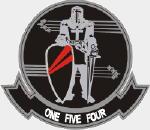Hobby Master HA3109 USAF Convair F-102A Delta Dagger Interceptor - 57th Fighter Interceptor Squadron "Black Knights", Keflavik, Iceland, 1963 (1:72 Scale)
"Top Cover for America"
- Principal role of the Alaskan Air Command
 The Convair F-102 Delta Dagger is an interceptor aircraft designed and produced by the American aircraft manufacturer Convair. A member of the Century Series, the F-102 was the first operational supersonic interceptor and delta-wing fighter operated by the United States Air Force (USAF).
The Convair F-102 Delta Dagger is an interceptor aircraft designed and produced by the American aircraft manufacturer Convair. A member of the Century Series, the F-102 was the first operational supersonic interceptor and delta-wing fighter operated by the United States Air Force (USAF).
The F-102 was designed in response to a requirement, known as the 1954 Ultimate Interceptor, produced by USAF officials during the late 1940s. Its main purpose was to be the backbone of American air defenses and to intercept approaching Soviet strategic bomber fleets (primarily the Tupolev Tu-95) during the Cold War. The aircraft was designed alongside a sophisticated fire-control system (FCS); however, a simplified unit had to be adopted due to development difficulties. It used an internal weapons bay to carry both guided missiles and rockets. On October 23rd, 1953, the prototype YF-102 performed its maiden flight; however, it was destroyed in an accident only nine days later. The second prototype allowed flight testing to resume three months later, but results were disappointing: as originally designed, the aircraft could not achieve Mach 1 supersonic flight.
To improve its performance prior to quantity production commencing, the F-102 was redesigned, its fuselage was reshaped in accordance with the area rule while a thinner and wider wing was also adopted. Flight testing demonstrated sufficient performance improvements for the USAF to be persuaded to permit its production; a new production contract was signed during March 1954. Following its entry to USAF service in 1956, the F-102 promptly replaced various subsonic fighter types, such as the Northrop F-89 Scorpion, in the interceptor role. The F-102C tactical attack model, equipped with several improvements, including a more powerful engine and Gatling gun, was proposed but not ultimately pursued. A total of 1,000 F-102s were built, both for the USAF and a handful of export customers, including the Hellenic Air Force and the Turkish Air Force.
By the 1960s, USAF F-102s had participated in a limited capacity in the Vietnam War as a bomber escort and even in the ground-attack role. The aircraft was supplemented by McDonnell F-101 Voodoos and, later on, by McDonnell Douglas F-4 Phantom IIs. Over time, many F-102s were retrofitted with infrared search/tracking systems, radar warning receivers, transponders, backup artificial horizons, and modified fire-control systems. Throughout the mid-to-late 1960s, many USAF F-102s were transferred from the active duty Air Force to the Air National Guard, and, with the exception of those examples converted to unmanned QF-102 Full Scale Aerial Target (FSAT) drones, the type was totally retired from operational service in 1976. Its principal successor in the interceptor role was the Mach 2-capable Convair F-106 Delta Dart, which was an extensive redesign of the F-102.
Pictured here is a 1:72 scale rendition of a Convair F-102A Delta Dagger interceptor that was attached to the 57th Fighter Interceptor Squadron "Black Knights", then deployed to Keflavik, Iceland, during1963.
Sold Out!
Dimensions:
Wingspan: 6-1/4-inches
Length: 11-1/4-inches
Release Date: February 2012
 Historical Account: "The Black Knights of Keflavik" - The 57th Fighter-Interceptor Squadron, also known as "The Black Knights of Keflavik", is an inactive United States Air Force unit. The 57 FIS was last stationed at Naval Air Station Keflavik, Iceland. It was inactivated on March 1st, 1995.
Historical Account: "The Black Knights of Keflavik" - The 57th Fighter-Interceptor Squadron, also known as "The Black Knights of Keflavik", is an inactive United States Air Force unit. The 57 FIS was last stationed at Naval Air Station Keflavik, Iceland. It was inactivated on March 1st, 1995.
The 57th was reactivated as an active squadron at Presque Isle AFB, Maine, on March 20th, 1953 under Air Defense Command and designated the 57th Fighter Interceptor Squadron. It was equipped with Northrop F-89C Scorpion interceptor, and assigned to the 528th Air Defense Group. It maintained a 24 hour alert at Presque Isle.
On November 12th, 1954, the 57th FIS was moved to Keflavik Airport, Iceland, replacing the 82d Fighter-Interceptor Squadron which was temporarily assigned from Larson AFB, Washington. At Keflavik, ADC was a tenant unit under the Military Air Transport Service Iceland Air Defense Force (IADF).
The mission of the 57th FIS at Keflavik was a interceptor squadron charged with the monitoring of the Greenland, Iceland, United Kingdom (GIUK gap) in the North Atlantic that formed a naval warfare choke point during the Cold War. The 57th would respond alerts from ADC Ground-Control Intercept (GCI) and warning stations established on Iceland; the GCI stations guiding its interceptor aircraft toward unidentified intruders picked up on the radar scopes. Over 1,000 intercepts of Soviet aircraft took place inside Iceland's Military Air Defense Identification Zone (ADIZ).








